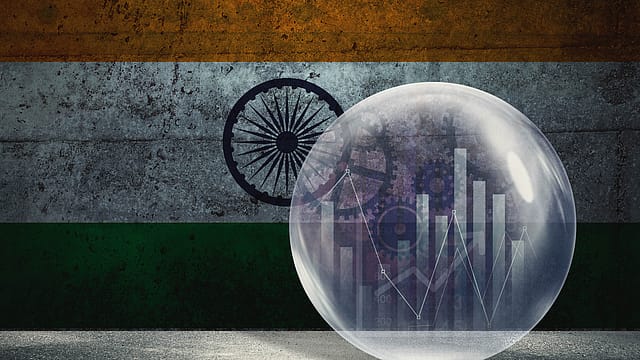From growth to fiscal deficit and developed economy goals, here are eight key takeaways from IMF’s macro view on India
ADVERTISEMENT

The Executive Board of the International Monetary Fund on Wednesday said Indian economy continues to perform well. IMF said following economic growth of 6.5% in 2024-25, real GDP expanded by 7.8 percent in the first quarter of FY26, while retail inflation declined markedly, driven by subdued food prices. It projected India’s real GDP growth at 6.6 percent in 2025-26
The agency said financial and corporate sectors have remained resilient, supported by adequate capital buffers and multi-year low non-performing assets. On the fiscal management, IMF said fiscal consolidation has advanced, and the current account deficit has been contained, supported by resilient service exports. IMF said India’s inflation is projected to remain well contained, reflecting the one-off effect of the GST reform and continued benign food prices.
IMF said despite external headwinds, growth is expected to remain robust, supported by favorable domestic conditions. Pegging India’s real GDP growth at 6.6 percent in 2025-26 before moderating to 6.2 percent in FY26, under the baseline assumption of prolonged 50 percent U.S. tariffs, IMF said GST reforms and the resulting reduction in the effective rate are expected to help cushion the adverse impact of tariffs.
December 2025
The annual Fortune 500 India list, the definitive compendium of corporate performance, is out. This year, the cumulative revenue of the Fortune 500 India companies has breached $2 trillion for the first time. Plus, find out which are the Best B-schools in India.
Here are the eight key takeaways from the IMF Executive Board’s Article IV consultation for India.
Structural reforms to aid developed economy aspirations
IMF said the slew of structural reforms India has been undertaking will support its ambition to become an advanced economy. “Looking ahead, India’s ambition to become an advanced economy can be supported by advancing comprehensive structural reforms that enable higher potential growth,” it said.
Geo-economic fragmentation a risk
IMF said there are significant near-term risks to the economic outlook. “On the upside, the conclusion of new trade agreements and faster implementation of structural reform domestically could boost exports, private investment, and employment. On the downside, further deepening of geoeconomic fragmentation could lead to tighter financial conditions, higher input costs, and lower trade, FDI, and economic growth,” it said.
Reforms led leg up to growth, living standards
IMF said structural reforms have led to India’s growth and improved living standards of the citizens. “Real GDP growth has remained robust following a strong post-pandemic recovery. Generally prudent fiscal, monetary, and financial sector policies, coupled with instrumental structural reforms—such as the goods and services tax (GST), a flexible inflation targeting framework, and the rapid expansion of digital public infrastructure—have laid a strong foundation for sustained growth,” it said.
“These achievements have contributed to rising living standards and a significant reduction in poverty, with the share of the population in extreme poverty having fallen markedly to 5.3 percent in FY23,” it added.
Per capita income a concern
IMF said low per capita income in the Indian economy is a significant challenge. “India’s income per capita remains relatively low, the handover from public to private investment as a growth engine remains to be achieved, public debt is still elevated, and high-quality employment benefits only a small group of India’s growing labor force,” it said.
Domestic markets to insulate tariff shocks
IMF said heightened uncertainty over bilateral trade policy with the U.S. may dampen domestic investment and FDI into India, but the country is less exposed to global trade than many other Asian emerging markets, and its large and growing domestic market holds potential for economic resilience against external shocks.
Sustained high growth needed for developed economy goal
For laying the foundations of developed economy, the institution said India needs to continue with prudent macroeconomic policies to safeguard economic stability and activate all engines of growth—labor, capital, and productivity—through accelerated structural reforms, while ensuring that growth is inclusive. “The success of these reforms requires active participation across both public and private sectors, and strong coordination among Centre, states, and local governments,” IMF said.
Tariff resolution to boost growth, inflation to remain benign
IMF said growth outcomes could be more favorable if tariffs are resolved in the near term. “Headline inflation is expected to remain benign and average 2.8 percent in FY2025/26, below the 4-percent target but within the RBI’s tolerance band, reflecting subdued food price dynamics and the GST reform,” it said.
Fiscal deficit, public debt to come down
IMF said the fiscal deficit and the public debt ratio are projected to gradually decline, with risks of sovereign stress remaining moderate.
